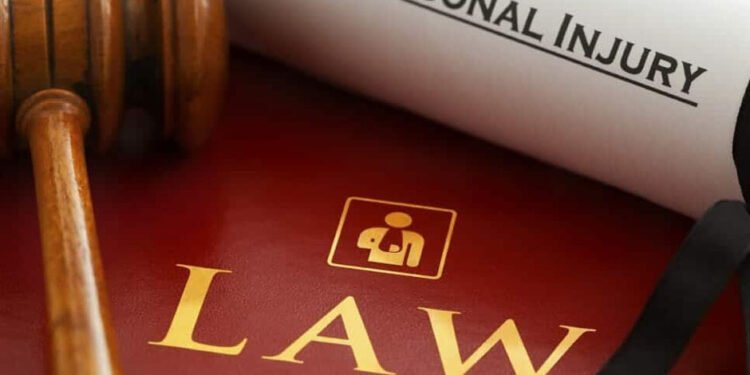When you hear about legal cases, you often hear terms like “compensatory damages” and “punitive damages.” Compensatory damages are straightforward; they’re meant to cover the actual loss or harm someone suffers. But punitive damages? They serve a very different purpose.
Rather than compensating, punitive damages aim to punish. This punishment sends a message to everyone. It’s also important to know that punitive damages are only awarded through trials. You need the assistance of a legal professional from a trusted personal injury law firm to handle the challenges of a trial.
Understanding this concept is easier if you look at real-life examples. Let’s dive into a few cases where punitive damages made a big difference.
What Are Punitive Damages?
Punitive damages are not about making the injured person whole. Instead, they are meant to punish someone (or a company) for particularly bad behavior.
Courts award these damages in cases of extreme wrongdoing, such as gross negligence or intentional harm.
For instance, if someone does something dangerous, knowing it could harm others, they could face punitive damages.
Example 1: The Ford Pinto Case
The Ford Pinto case is one of the most famous examples of punitive damages. In the 1970s, Ford produced a car called the Pinto.
Unfortunately, the car’s design had a major flaw. The gas tank was placed in a way that made the car prone to catching fire in rear-end collisions.
Even though Ford knew about the issue, they decided not to recall the car because paying for lawsuits was cheaper than fixing the design.
Then came the lawsuits. In one case, a family sued Ford after a deadly Pinto accident. The court awarded punitive damages because Ford had put profits over safety.
This case sent a strong message to companies: if you knowingly endanger lives, you will face consequences far beyond compensating the victims.
The lesson is that corporate responsibility matters, and cutting corners on safety can lead to severe punishment.
Example 2: The Hot Coffee Case (Liebeck v. McDonald’s)
Another case that shines a light on punitive damages is Liebeck v. McDonald’s, better known as the “Hot Coffee Case.” In 1992, Stella Liebeck, a 79-year-old woman, spilled a cup of McDonald’s coffee in her lap.
The coffee was so hot that she suffered third-degree burns and needed skin grafts. McDonald’s had known for a long time that their coffee was served at a temperature much higher than what’s safe.
Even though over 700 other people had been burned by their coffee, McDonald’s did nothing.
Liebeck sued, and the jury awarded her punitive damages. The court’s decision wasn’t just about compensating her medical bills but also about punishing McDonald’s for ignoring the safety of their customers.
This case showed that even if a company is large, it must still look out for its customers’ well-being, or it could face heavy financial penalties.
Example 3: The Philip Morris Tobacco Litigation
For decades, tobacco companies like Philip Morris misled the public about the health risks of smoking.
Even though they knew smoking caused cancer and other illnesses, they advertised cigarettes as safe or downplayed the risks. When people began getting sick and dying, the lawsuits followed.
One notable case resulted in massive punitive damages against Philip Morris. The court wanted to punish the company for misleading the public and encourage others to be honest about health risks.
This case served as a warning to other companies: misrepresenting facts can lead to serious legal consequences.
Example 4: Exxon Valdez Oil Spill
In 1989, the Exxon Valdez oil tanker struck a reef in Alaska, spilling millions of gallons of oil into the ocean. The spill caused massive environmental damage, killing wildlife and affecting the livelihoods of thousands of people.
Investigations showed that Exxon had been negligent in preventing the accident, as the ship’s captain had been drinking and the crew was not properly trained.
Lawsuits followed, and Exxon was hit with significant punitive damages. The court wanted to send a message to Exxon and all companies dealing with dangerous materials: You must take every possible step to prevent disasters.
This case highlighted that corporations must protect the environment and the public from harm.
When Punitive Damages May Not Be Awarded
While punitive damages are often awarded in cases of serious wrongdoing, they are not guaranteed in every case. For example, punitive damages might not be awarded if someone’s actions are considered just negligent, not grossly negligent.
Courts usually reserve these damages for situations where the behavior is especially reckless or intentional. In some states, there are even limits, or “caps,” on how much punitive damages can be awarded, no matter how bad the behavior is.
Key Takeaways from These Examples
The cases we’ve discussed all share one thing in common: the wrongdoing was severe. In each case, the courts awarded punitive damages to compensate the victims and punish the wrongdoers.
Whether it was a company cutting corners on safety, misleading the public, or failing to prevent a disaster, the courts made it clear that there are serious consequences for such behavior.
These cases also show that punitive damages aren’t just about the victim but about changing behavior to prevent future harm.
Conclusion
Punitive damages are a crucial part of the legal system. They warn individuals and companies that reckless, dangerous, or intentional harm will not go unpunished. The examples discussed help to show how punitive damages can push people and businesses to act more responsibly. Through these cases, we see that the goal isn’t just about punishment but also creating a safer, more honest society.












